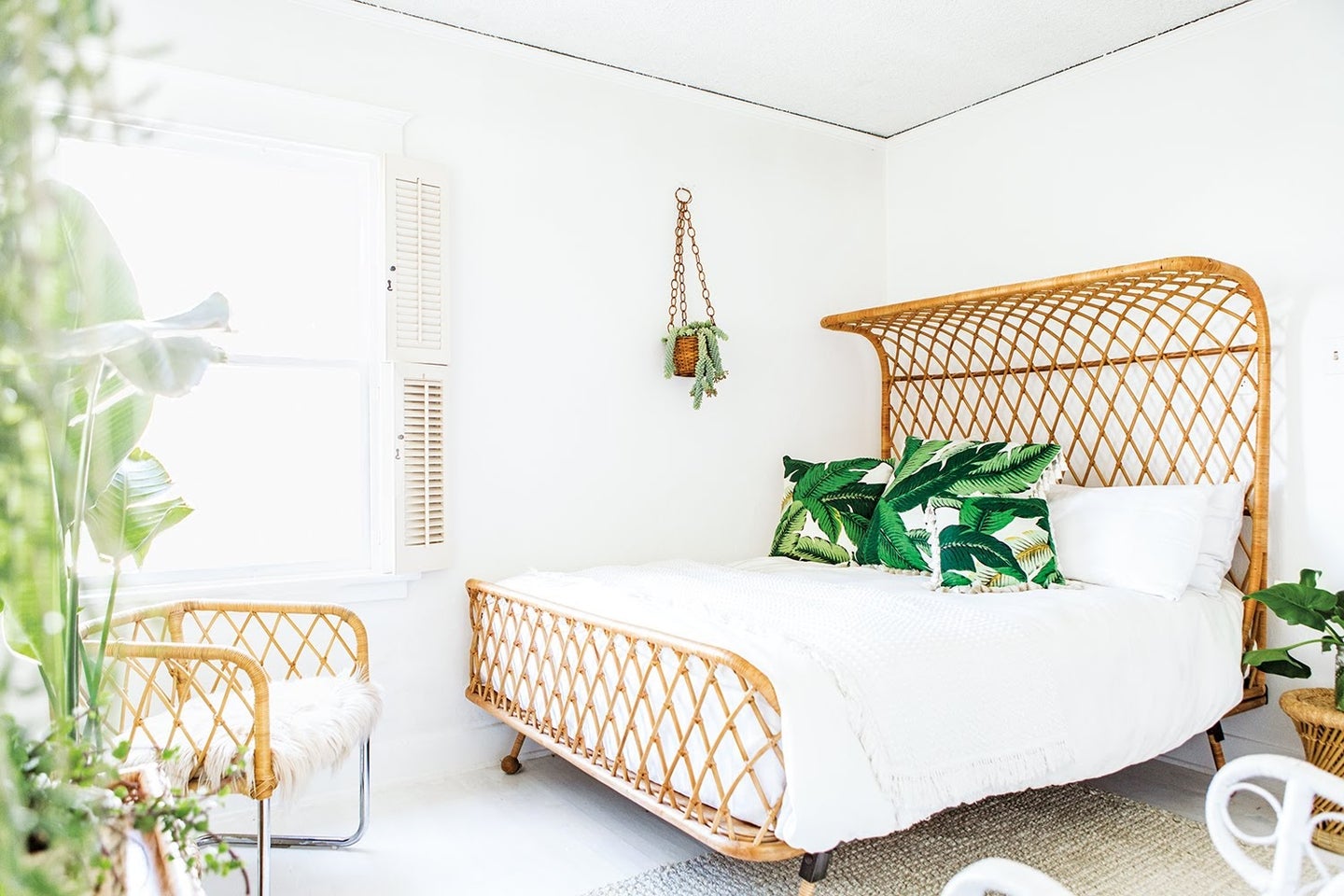5 Quick Bedroom Changes for a Better Night’s Sleep
Sound sleep is just a few tips away.
Updated Aug 9, 2019 7:06 PM
We may earn revenue from the products available on this page and participate in affiliate programs.
Here at Domino, we believe that a well-designed life is about much more than just having the right furniture and the prettiest wallpaper. For us, home is a place for fostering health and happiness, which means everything from caring for your skin and eating nourishing food to setting aside time to focus on your goals and intentions. To help you carve out space for that sort of self-care, we’re starting with a primer on what your doctor, your meditation coach, and your parents will tell you is essential for optimum health: great sleep.
Most of us will spend approximately 25 years of our life in bed, and if you live until the age of 70, you will spend approximately 220,000 hours asleep. “In a lifetime, you will spend more time in bed than you will spend in any other one location,” says Neil Stanley, a sleep science researcher and ambassador for Aromatherapy Associates. So it’s important to curate the perfect hibernation den to allow yourself to grab some deep, deep z’s. We say to keep it simple. “In order to get good sleep, you need three things: a bedroom conducive to sleep, a relaxed body, and a quiet mind,” says Stanley. Here are a few tips to nail that sleep-conducive bedroom.
An Analog Alarm Clock
You’ve probably already realized the downsides of leaving your phone on your bedside table—middle-of-the-night Insta-scrolling, for one—but a digital clock can also be problematic. “ Its light disrupts circadian rhythms,” says Jan Stritzke, deputy medical director of Germany’s Lanserhof Tegernsee health spa. Leave the phone in the kitchen and invest in an old-fashioned big-hand, little-hand clock. Bonus if there’s no snooze button.
Georg Jensen HK Clock with Alarm, $145, is as sleek, chic, and minimalist as they come.
Dimmer Switcher
“Humans are designed to sleep at night, and we evolved with light at night no brighter than a full moon,” says Stanley. “Darkness helps sleep, and indeed it is the onset of darkness that causes the release of melatonin at the start of the night, so your bedroom should be as dark as possible.”
Low light signals to the body that it’s time to power down, and nothing delivers a warm, moody glow better than a dimmer switch. Gale Singer, president and founder of Circa Lighting, recommends a dimmable overhead light if possible—to keep the bedside table serenely clutter-free, but dimmable table lamps do the job on a budget.
It’s also important to limit all other forms of light, so tape over any other sources of light, no matter how small, like a TV power light. This also means limited external light, via heavy, lined curtains or blackout blinds, or just an eye mask.
Earthen Warrior Indigo Cloud Sleep Mask, $60, is boho, tie-dye dreams come true and has an aromatherapy boost with crystals and herbs.
Cozy Bedding
According to most experts, a room temperature of between 60 and 67 degrees—on the cool side—is most conducive to nodding off. “During the night, the body needs to lose heat, and this is done mainly through the head and face, and thus a cool bedroom facilitates this heat loss,” says Stanley. However, if the room is too hot (or cold) or you are too hot (or cold) under your bedding, it’s more difficult for the body to lose heat and this will cause disturbed sleep.
For optimum comfort, especially during the colder months, Kirsty Williams, chief creative officer at Serena & Lily, suggests layering your bedding. Her winter must-have: flannel or soft cotton sheets, which feel warm from the moment you slide under the covers. We’re a big fan of its Beach Club Sheet Set, $198–298, for the luxe, eco-friendly, and cozy cotton.
The Right Mattress
Pillow-top? Memory foam? Your sleep position may determine the answer. To keep the spine aligned, side sleepers need a mattress with enough give to allow hips and shoulders to sink in. “You want to make sure that you are sleeping ‘in’ the bed not ‘on’ the bed,” says Stanley. Back sleepers may do best with firmer models that offer even, consistent support.
No matter what sleeping position you initially fall asleep in, you naturally move 40–60 times each night, of which 10–20 are major positional changes, says Stanley, so you never know what position you are going to find yourself sleeping in. “Science cannot measure comfort, essentially bed comfort is a matter of personal choice,” says Stanley. So choose one that you’ll love that is made of high-quality materials.
We’re personally a huge fan of the Tuft & Needle Mattress, $350–750, and so are a lot of others that have felt its comfort—it has more five-star reviews than any other mattress. It also is great for most sleeping positions, with the perfect balance between pressure relief, support, and a cooling gel foam for the perfect temperature—sweet dreams are made of this mattress.
A Peaceful Palette
“The bedroom should be calming, and walls and furniture should be in calming colors,” says Stanley.
“Greens, blues, and lavender are generally considered calming,” says Benjamin Moore color and design expert Andrea Magno, “but color is subjective, so an energetic hue for one person may be tranquil for another.” Whatever your paint pick, avoid a high-contrast look (think: dark walls and white furniture), which forces the eye to work harder, revving you up rather than winding you down. For supreme serenity, go for tone-on-tone.





